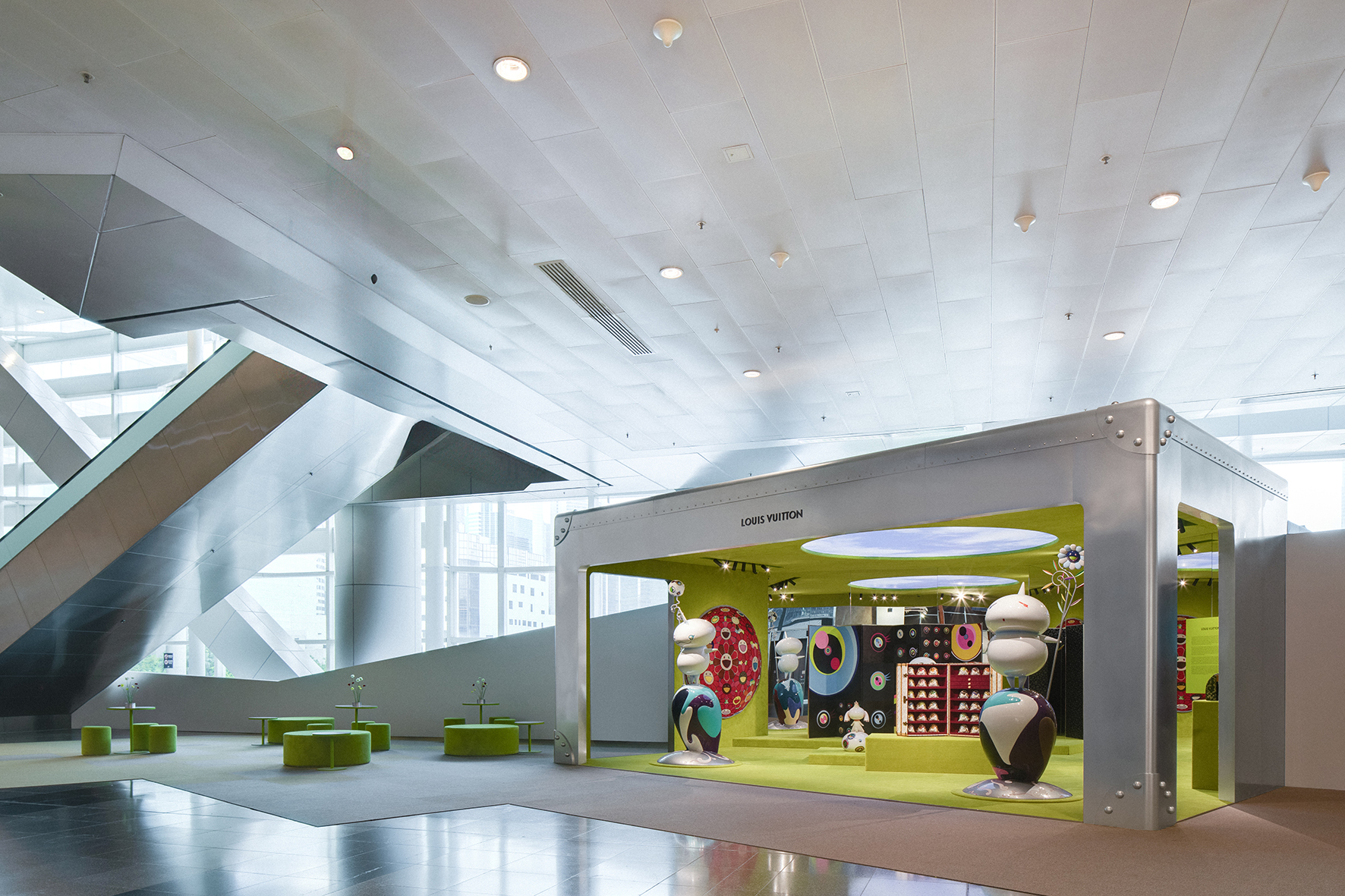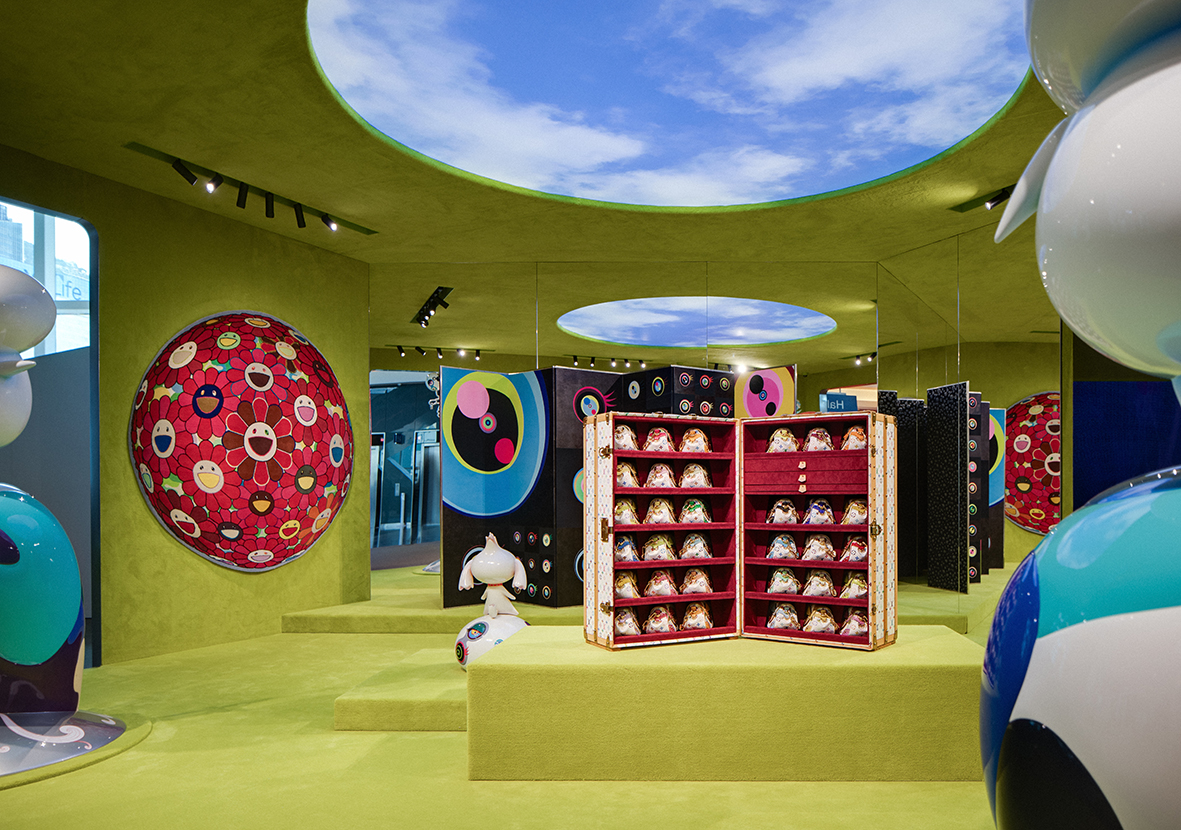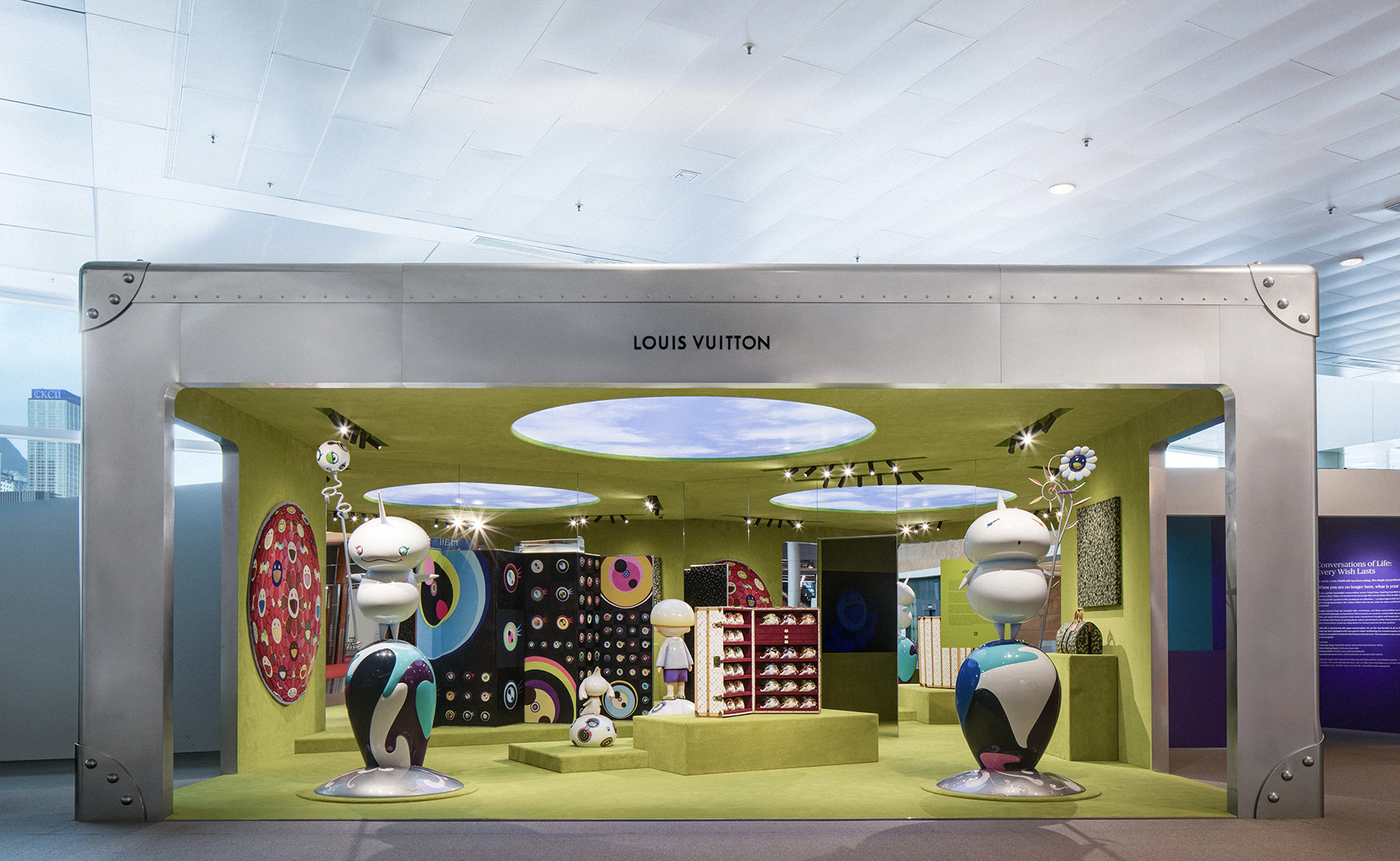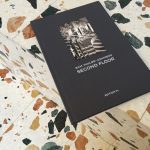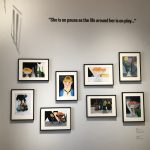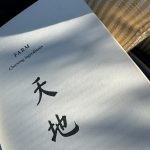Though I won’t be at Art Basel Hong Kong this year, I can see myself being there — walking towards that open, mirrored Vuitton trunk, blown up into an immersive booth, glowing under the spotlights of the Convention Centre in Sheung Wan. A portal, of sorts. Step through the entrance, and you’re inside Takashi Murakami’s world: oversized sculptures, playful motifs, and characters that seem friendly at first glance, but are never just cute.
Murakami is one of Japan’s most recognisable and globally celebrated artists. He trained in nihonga — a centuries-old painting tradition using mineral pigments and gold leaf — before shifting gears early in his career. Frustrated by the limited reach of Japanese contemporary art at the time, he set out to build a new visual language, drawing from manga, anime, and the glossy hyperreality of consumer culture. His work always plays with contradiction. Joyful yet eerie, futuristic but full of nostalgia. It’s that magnetic in-between — bright surfaces hiding something stranger — that makes his work linger in the mind.
In the early 2000s, Murakami formalised this approach in what he called Superflat — a theory, a movement, and an aesthetic. It deliberately blurred the lines between high and low art, mixing ancient cultural symbols with commercial icons. Think temples next to Teletubbies. Since then, Superflat has become a global phenomenon, appearing not only in museums but also on billboards, bags and collectible drops.
One of the most influential examples of this crossover came in 2002, when Marc Jacobs — then Louis Vuitton’s artistic director — invited Murakami to reimagine the house’s classic monogram. What followed was a pastel-hued redesign splashed across white leather bags, often accompanied by cartoon cherries and smiling flowers. The spring/summer 2003 runway saw models carrying not just one but multiple bags at once, signalling a new moment where art and fashion collided head-on. It was playful, desirable, and — at the time — surprisingly disruptive.
My own first encounter came shortly after. Together with a few friends, we bought a small round wallet from the collection as a birthday gift. It wasn’t even for me, but I remember how special it was — beautifully packed like a precious gem. She was so amazed to see this special limited edition.
Reactions across the art world were mixed. Some questioned whether this was art at all, while others embraced the boundary-breaking. Murakami later noted that the value of his fine art works even dropped at auction for a while after the collab. But time reframed the project. Murakami gave the art and fashion connection a bold, contemporary, and fun twist.
Now, over twenty years later, that relationship continues as an established exchange. Art Basel Hong Kong — which launched in 2013 as the Asian edition of the renowned art fair — returns in 2025 with a dedicated presentation of Murakami’s universe by Louis Vuitton. The larger-than-life booth itself mimics a giant Vuitton trunk, lined in vivid acid-green, with works on loan from the Fondation Louis Vuitton in Paris.
Visitors will encounter Zoucho-kun and Tamon-kun — two large-scale sculptures from 2003 — and the enigmatic Superflat Jellyfish Eyes 1 screen, alongside prints, textiles, sculptures and an immersive “secret” projection room screening Murakami’s short films. His visual language moves between surface gloss and subtle disturbance. Always vibrant, but never flat.
Key pieces from the original Murakami x Vuitton collections also make an appearance, including the Monogram Multicolore Marilyn Trunk (2003), filled with 33 bags in every colour of the motif, and the Monogramouflage Keepall (2008), where camouflage meets the classic LV pattern. These pieces, once seen as playful accessories, now feel like cultural markers.
The timing of this refreshed presentation feels fitting. Murakami continues to explore new territories — NFTs, animated series, global exhibitions. For a recent solo show in Kyoto, he even requested a Louis Vuitton trunk as part of the display, explaining that in Japan, contemporary art still sits on the fringe, while fashion remains widely understood. That instinct, to reach broader audiences through unexpected forms, might explain why this pairing still resonates. Murakami and Louis Vuitton both understand the power of surface and storytelling. Together, they create work that doesn’t always shout, but always suggests something more.
The Murakami x Louis Vuitton installation is a carefully constructed world, part archive, part fantasy. A space where Japanese tradition, French luxury, and mass culture briefly share the same frame.
More info:
www.artbasel.com/hong-kong
www.louisvuitton.com
All images courtesy of Louis Vuitton.
